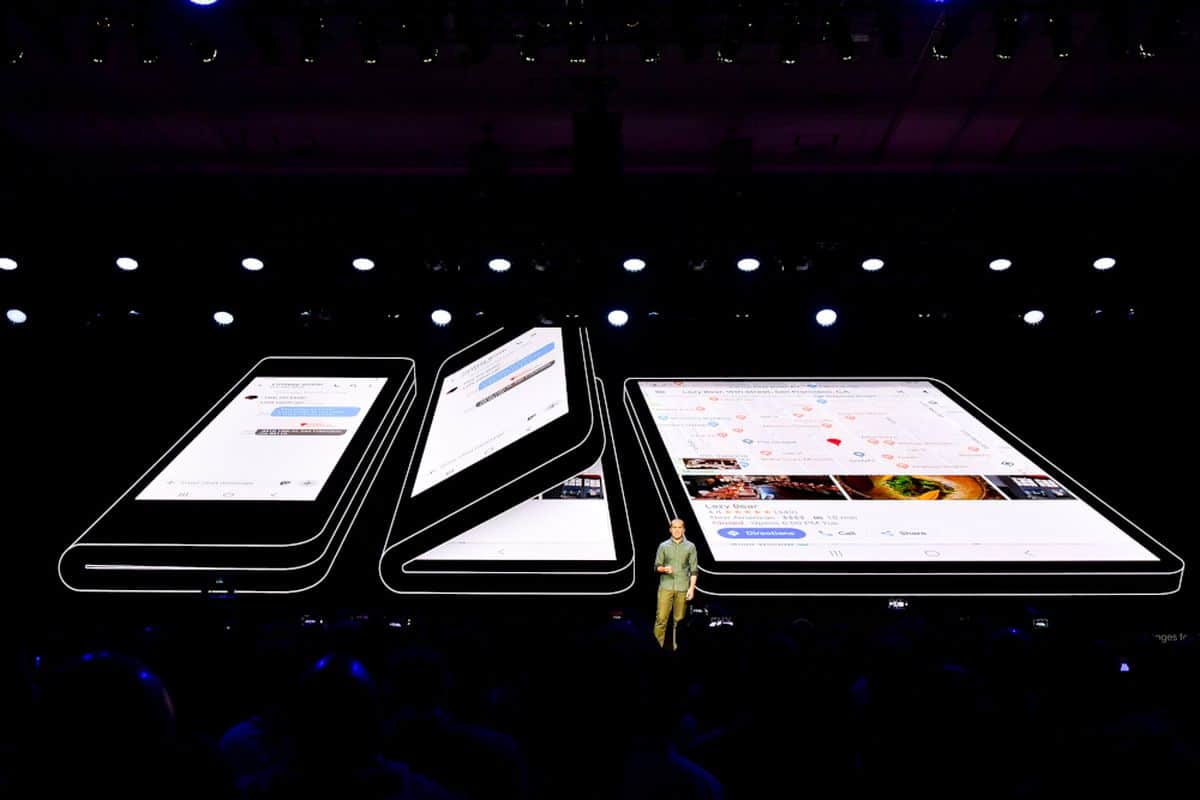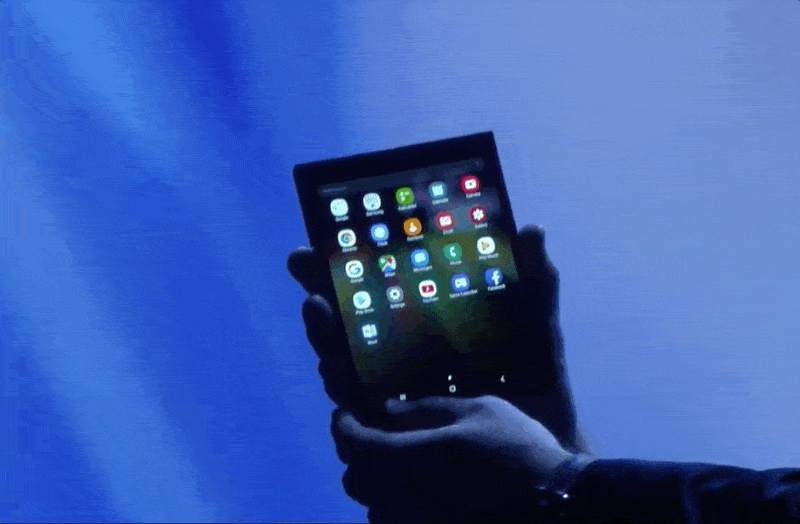Foldable Samsung phones are coming.
Foldable Samsung phones are coming.
Samsung's device is just the beginning.

Futuristic-looking flexible tablets and smartphones have captured our imagination for years.
Whether it's the folding tablets that are in the market for Westworld or of the many book-shaped slates with folding pages at Microsoft's future vision videos ,
a phone that unfolds into a much larger device is like a dream. Samsung is now trying to make these wild concepts a reality.
The manufacturer Galaxy yesterday unveiled its new Infinity Flex display ,
a display technology that will allow a tablet-sized screen to be folded into a device that approximates the size and shape of a smartphone.
While we have seen portable devices flexible y flexible , this is one of the first times we've seen such a display on a phone rumored to launch in 2019.
Samsung's device was "disguised" by what appears to be a thick case. and is shown only in dim lighting, but it's much more than just concept art.

Samsung is actually using two separate displays to create its foldable phone,
one on the inside and a smaller display on the outside, unlike the Royole FlexPai which uses a single foldable display on the outside of the device.
Samsung's internal display is 7.3 inches with a resolution of 1536 x 2152 (4.2: 3). It folds in half to reveal a second screen on the front of the device.
This second "cover screen," as Samsung calls it, functions as a 4.58-inch phone interface with a resolution of 840 x 1960 (21: 9).
It is also flanked by much larger bezels at the top and bottom compared to the internal display.
Although it looks very rugged, Samsung says that the device hiding inside the disguise is actually "impressive."
This combination of displays has given us an idea of what to expect from foldable phones in 2019 and beyond.
Since glass is not flexible, Samsung has had to develop new materials to protect its new display.
The Infinity Flex display uses a polymer that Samsung says is "flexible and resilient," meaning it can maintain its strength even when folded and unfolded "hundreds of thousands of times."
Samsung has combined this with a new adhesive that laminates the individual displays. layers together to allow them to flex.
However, none of this is glass, so it might feel a little different than what we're used to with modern phones, tablets and touch panels.
Just like smartphones they started out with tough plastic screens and stylus input,
before the iPhone showed that capacitive touch on glass was the future, this foldable era will include compromises before the technology advances.
Samsung's device, while portable, did not look particularly slim compared to modern smartphones.
The bezels when folded for use as phones are also gigantic compared to modern edge-to-edge flagships,
and the foldable screen Samsung has chosen makes the device very tall when closed.


Write us a comment: